Nexus 7 (2013) - Mini Review
by Brian Klug on July 27, 2013 12:54 AM EST- Posted in
- Tablets
- Snapdragon
- Qualcomm
- Android
- Mobile
- APQ8064
- Nexus 7
- Android 4.3
Last year the Nexus 7 debuted with a Tegra 3 SoC, which for reminder consisted of a 4+1 architecture of ARM Cortex A9 CPUs, with the 4 A9s built on 40nm G, and the +1 “shadow core” A9 built on 40nm LP (TSMC’s 40 LPG process), accompanied by ULP GeForce GPU with 12 cores running at a max GPU clock of 416 MHz. The exact SoC was NVIDIA’s Tegra 3 T30L, which could run one A9 at up to 1.3 GHz and all A9s at up to 1.2 GHz.
Rather than the relatively logical upgrade path of going to NVIDIA’s Tegra 4 SoC (I’ve heard all manner of speculation about what happened there), the new Nexus 7 switches to Qualcomm’s APQ8064–1AA, a version with 4 Krait 300 CPU cores (yes, Krait 300, not 200) running at up to 1.5 GHz and Adreno 320 graphics. Rather than use a PoP and LPDDR2, this specific APQ8064 variant goes to PCDDR3L–1600 MHz instead, including 4, 4Gb discrete 1.35V SK-hynix DRAM devices off to the side (more on the opposite side of the PCB) adding up to 2 GB of RAM. Qualcomm's Snapdragon S4 Pro and Snapdragon 600 branding gets confused here, although Qualcomm is calling the APQ8064 inside the Nexus 7 (2013) S4 Pro, it's more like an underclocked or lower binned Snapdragon 600.
At this point APQ8064 is probably the most well understood SoC in recent memory (so much so that I’m pining for devices to include something different just from an academic perspective) so I’ll spare the very verbal discussion about its performance.
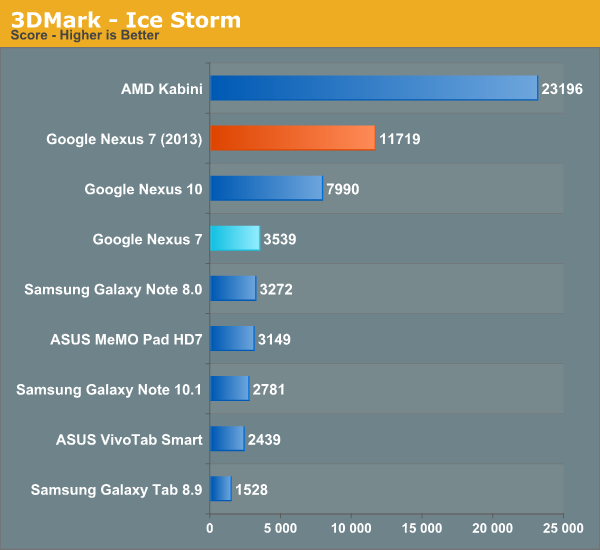



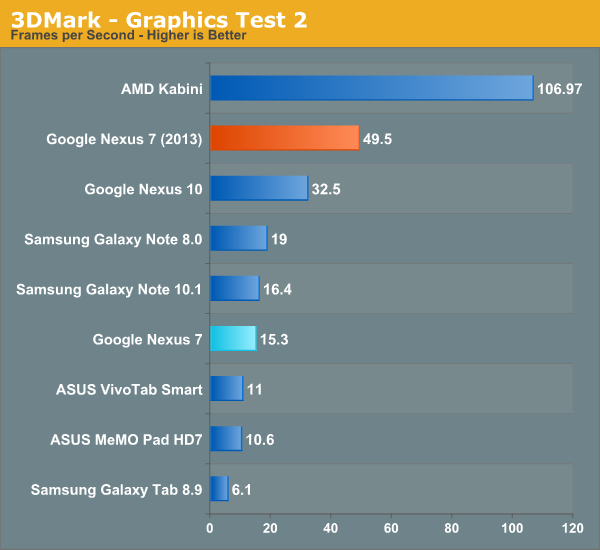
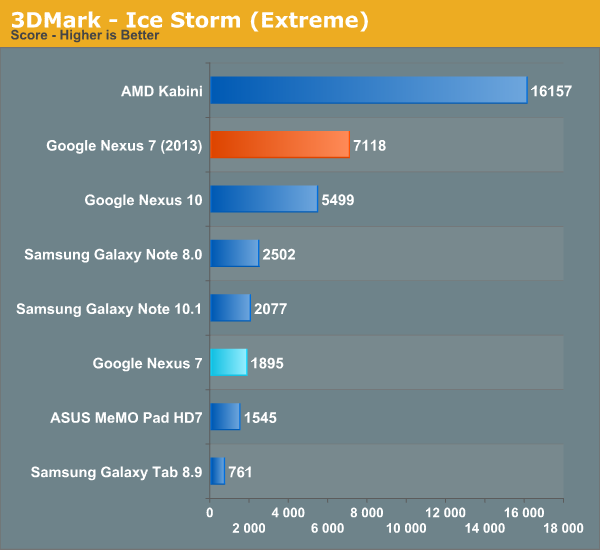

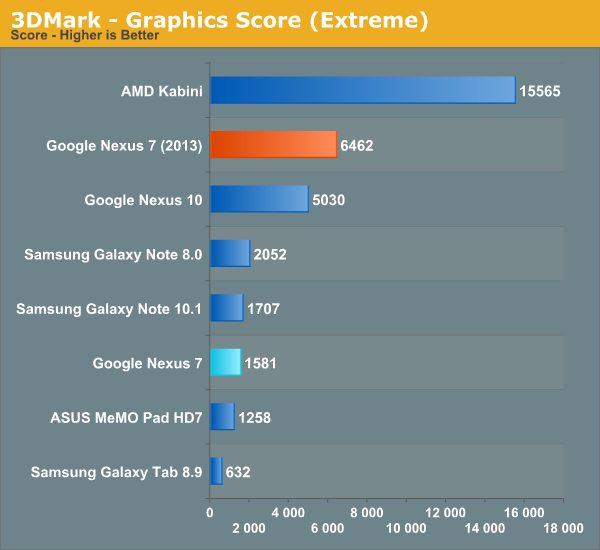

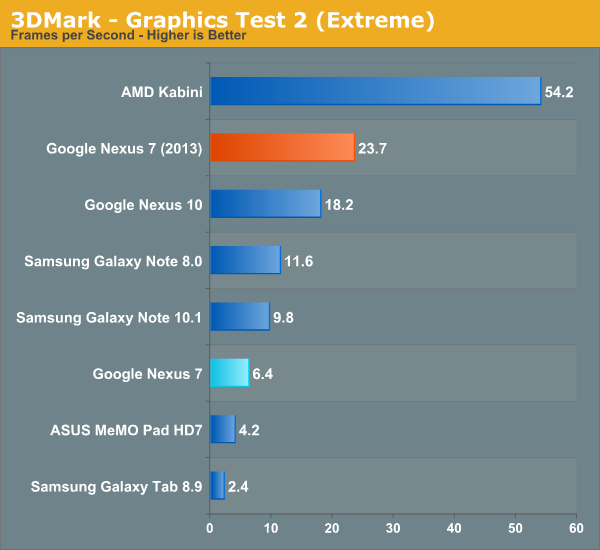


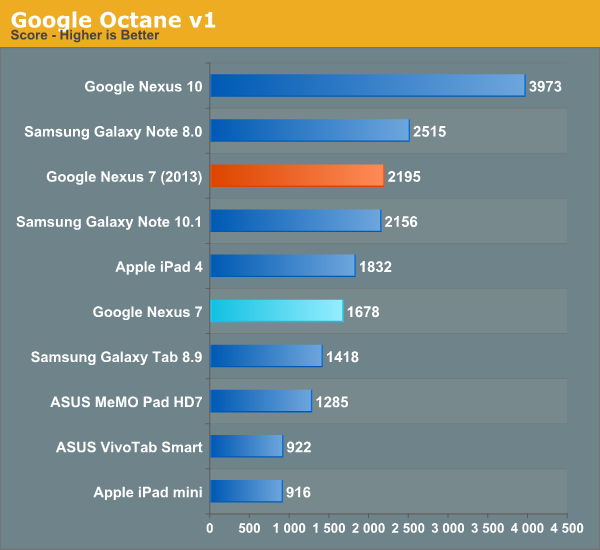
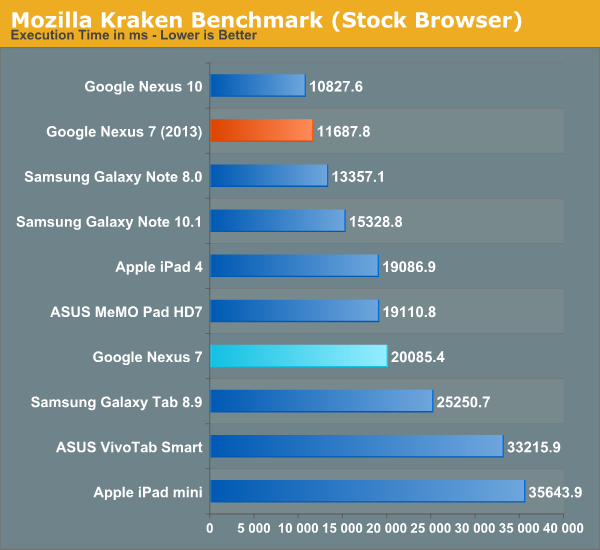
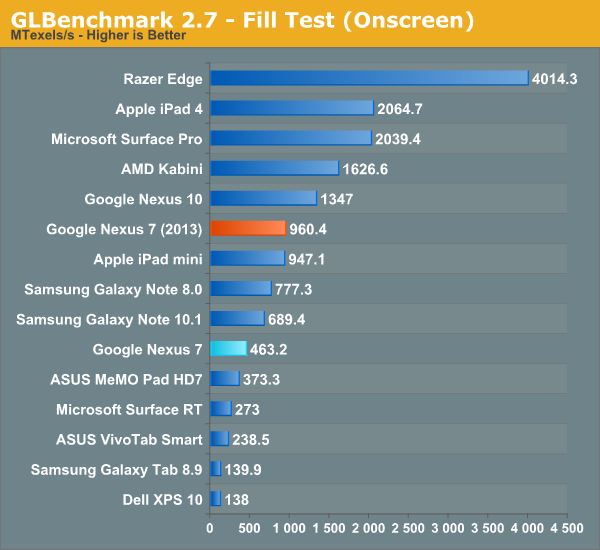
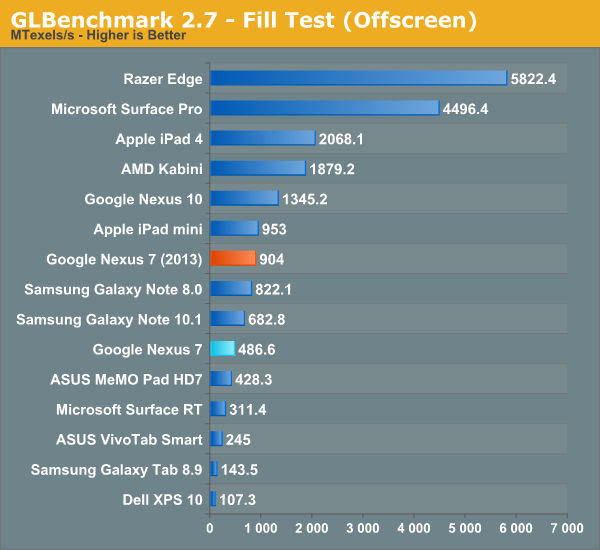
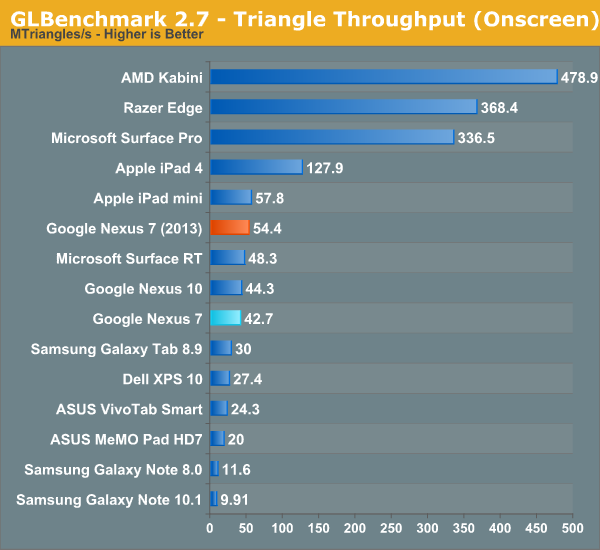
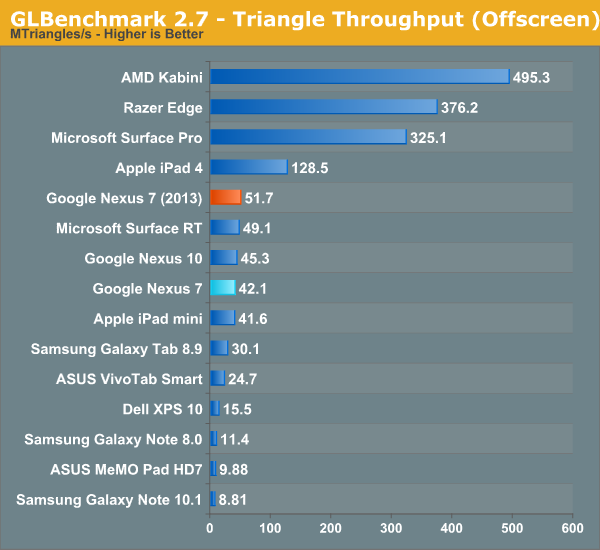
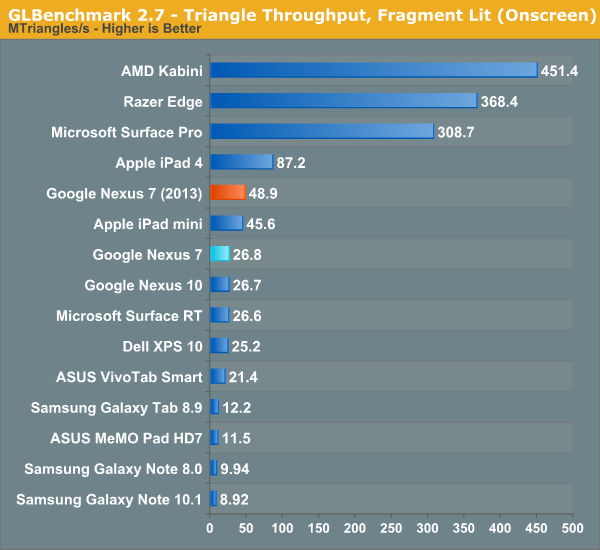
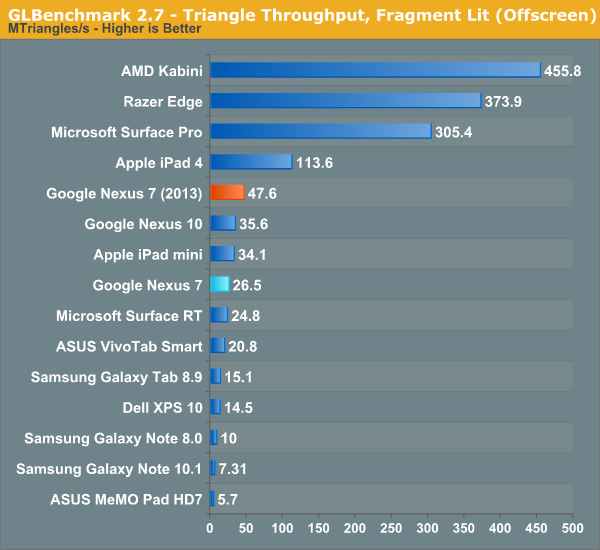
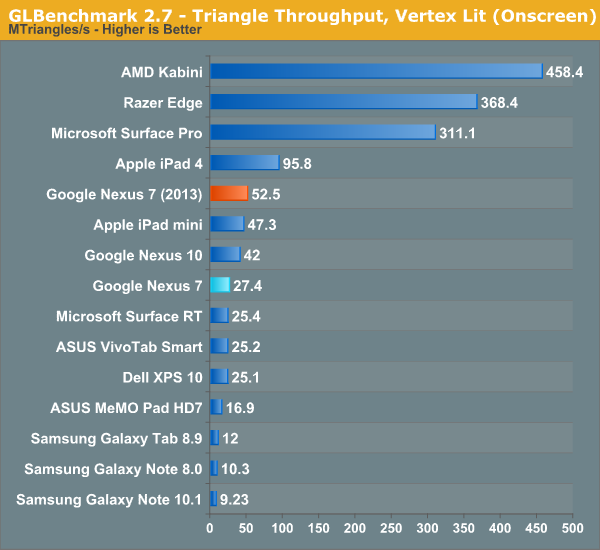
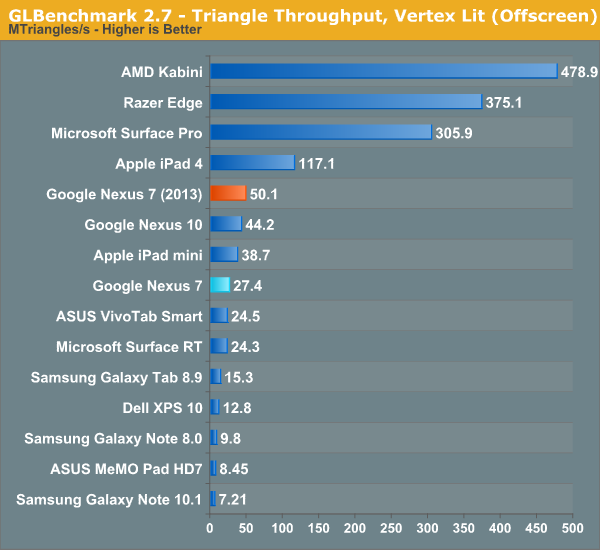

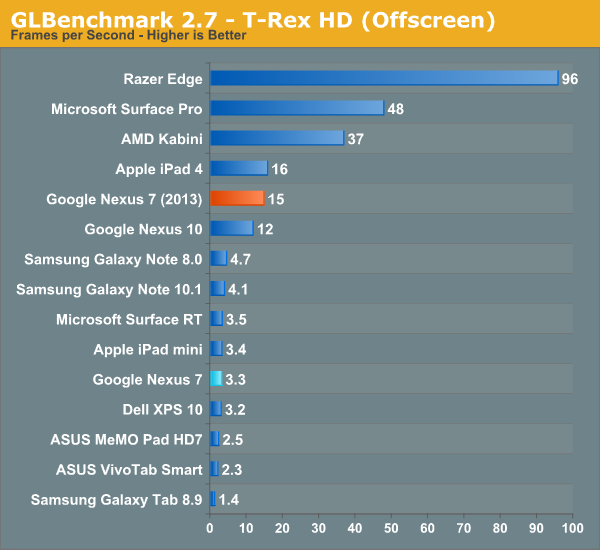
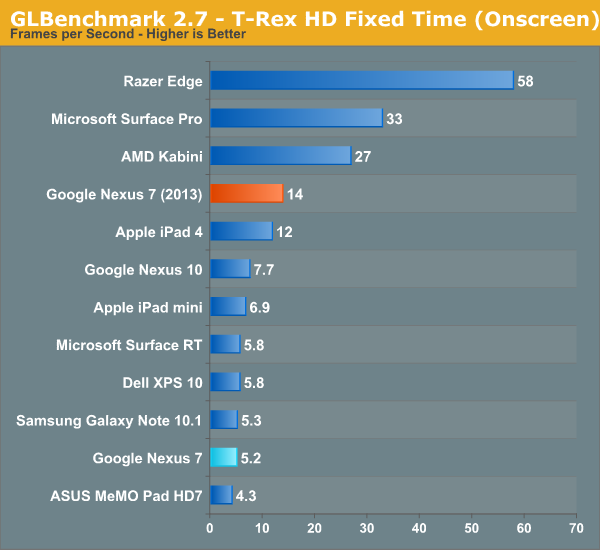
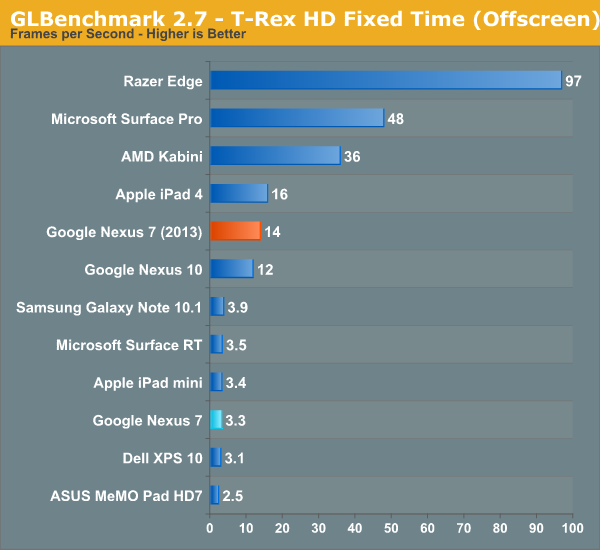
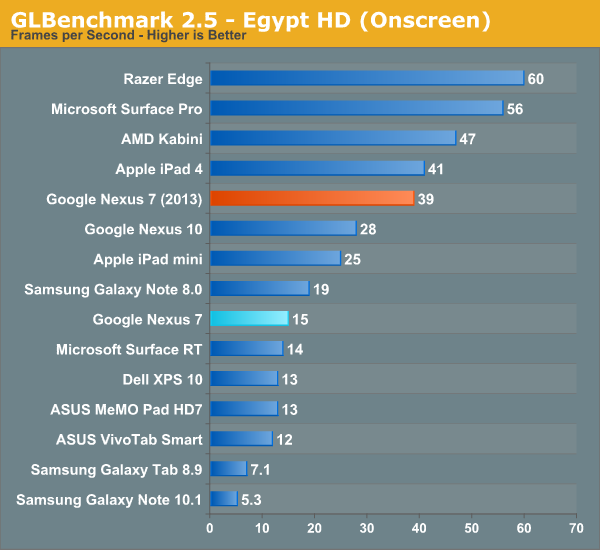
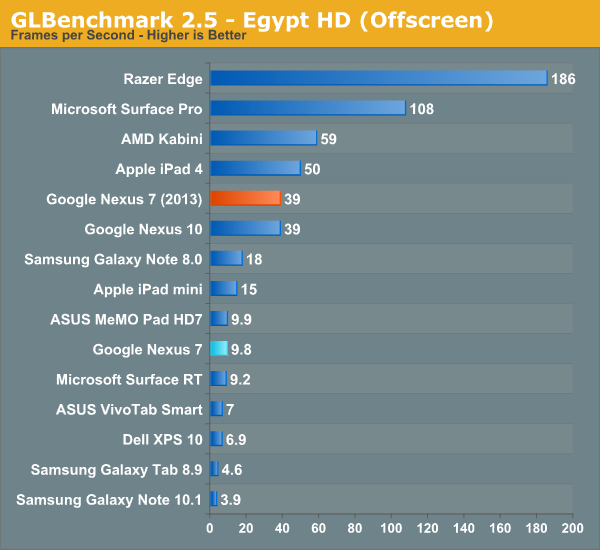
Suffice it to say, moving from 1.2–1.3 GHz Tegra 3 to 1.5 GHz APQ8064 represents a big jump forwards in performance. Google claimed 1.8x improvement on CPU performance, and 4x improvement on GPU, which gets validated pretty much consistently through the benchmarks. I never felt like Tegra 3 was a slouch by any means (performance was more I/O bound on the OG Nexus 7, which we’ll talk about in a moment), but the new Nexus 7 has ample performance for the considerable increase in screen resolution.
Dat eMMC
It wasn’t any secret with the original Nexus 7 that much of the real world performance was gated by storage I/O throughput – we wrote about it after all – and storage performance was a common complaint while multitasking on a few other previous and similar era ASUS tablets. Most of the time performance was acceptable, and for $200 you can’t complain too much about things, the issue was that further on in the life of the tablet performance began degrading somewhat notably, leading to complaints.
Obviously the first thing I did on the Nexus 7 (2013) was run Androbench with the same 100 MB settings to test and see what out of box I/O performance looks like. Things are much better with the new Nexus 7 than they were with the previous one, so at a high level all is good.
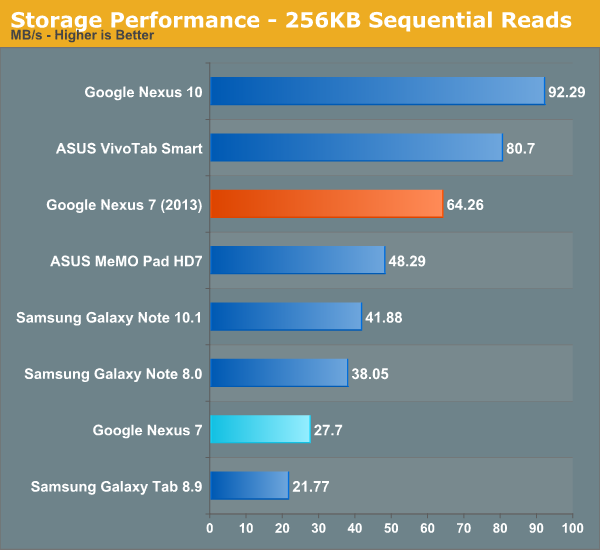
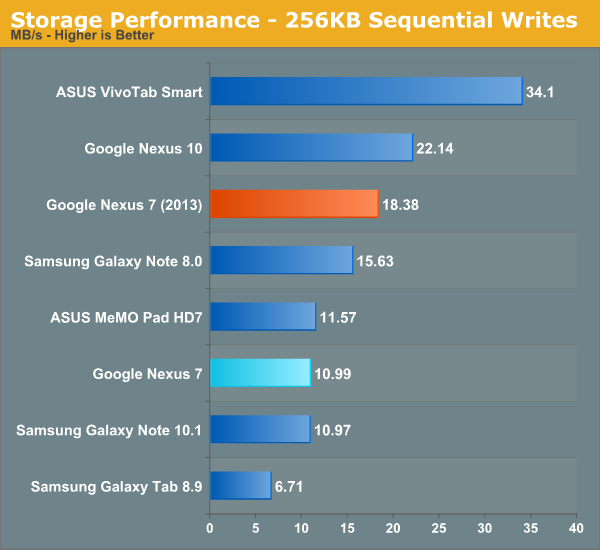
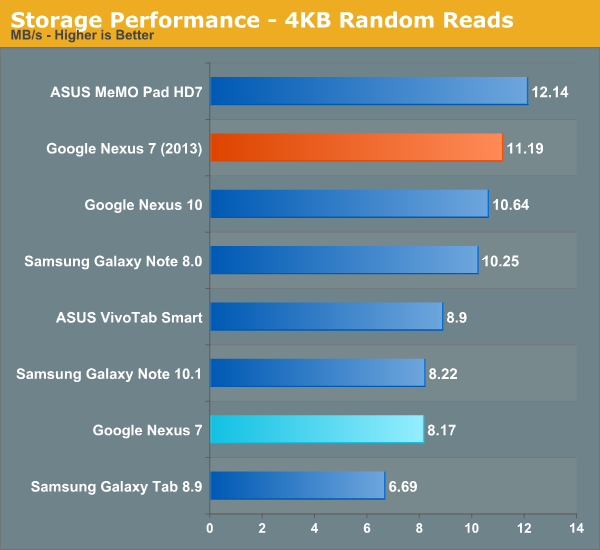

The story actually is a bit more involved however. One of the big problems was that the slowness which occurred with the prior Nexus 7 took device aging to appear – it was great for the first few months, but after you started loading it things tailed off. The new Nexus 7 (2013) with Android 4.3 includes support for fstrim, essentially idle garbage collection, which TRIMs the eMMC when a few conditions are met – the device is idle, screen off, and battery above roughly 70-percent. I’m told that TRIM support has been part of the eMMC standard since around version 4.2, it was just a matter of enabling it in software. The result is that the new Nexus 7 shouldn’t have these aging affects at all. Better yet, fstrim support has also been added to the old Nexus 7 with as of the Android 4.3 update, so if you’ve got a Nexus 7 that feels slow, I/O performance should get better after fstrim runs in the background. I'm checking on whether the other Nexus devices have also had TRIM support added. I would consider the slow storage aging problem fixed as of now, and Google took the eMMC and storage I/O performance issues with the previous Nexus 7 to heart for this version.


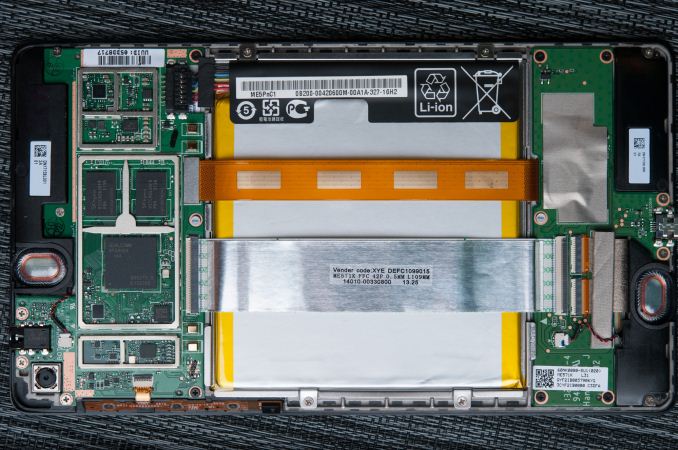
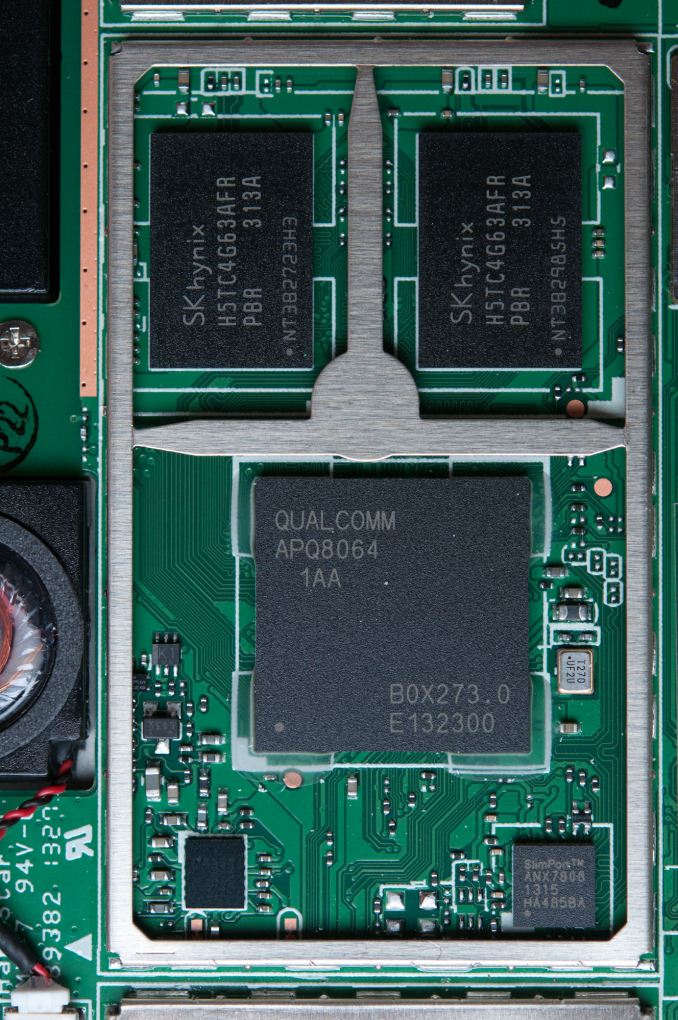














252 Comments
View All Comments
spinportal - Monday, July 29, 2013 - link
If you are needing space on the go, hate dongles for USB OTG, and lacking as SD card slot, don't want to spend on a data plan for LTE/3G, and don't want to set up a your own Plex media server or depend on Wifi streaming being available for your Box/Google Drive/ Skydrive / Dropbox, don't want to spend on Spotify / Pandora / Rdio, then bring your own 1 TB wifi storage box from Seagate (Satellite or Wireless Plus) and add the special firmware modification and might as well through in a portable power brick for recharging in between pitstops at the wall outlets. The Seagate Wireless+ with mod can act as a wifi bypass bridge so you can use the media server functions of the drive, and still go on the 'net. Without the mod, you do not have a wifi bridge option. And the SW+ can feed up to 8 connected devices. I've tried Plex media from a home server over cable internet to public wifi at Starbucks and 720p music videos were choppy so forget 1080p 2-hr feature length videos being an enjoyable experience. Music streaming was not so bad on remote Plex, and I'm spoiled to not enjoy 480p DVD quality video anymore since it looks so pixelated and blurry (unless you're on a really small 4" smartphone screen)spinportal - Monday, July 29, 2013 - link
Also, where's the pet projects of turning a Nexus 7 (32GB/LTE) into a car infotainment system with Waze / Google Maps (+ offline maps) / Garmin-TomTom apps, Dragon (Vlingo) for handsfree calls (assumed internal tablet mic), emails and texting (narration as well), dashboard mount, bluetooth integration to car stereo so audio outputs to car speakers with call muting other audio apps (assumed built-in functionality by now)? What is needed is for the Big Motors to integrate bt into their buttons on the steering wheel, or otherwise 3rd parties are going to build their own bt kits to do navigation (vol +/-, OK, left/right/up/down cursor, etc.) from the wheelaliasfox - Monday, July 29, 2013 - link
This was supposed to be a reply to somebody about 10 pages ago who commented on tablets not getting updated past the first 2-3 years. Completely out of context here.vision33r - Monday, July 29, 2013 - link
It looks like a very large 2011 Android phone with all that gap on the bottom. In 2013, most android phones have very little gap or wasted space in the bottom.Wwhat - Monday, July 29, 2013 - link
So annoying how such tablets are all infused with monitoring you by google and such (and 'partners' if you know what I mean)I like tech and wish I could use a tablet without that ever present feeling of being monitored and watched and monitored and monitored, oh and logged.
I'm not just bitching, it is a serious put-off for me, and since I'm not unique I have to assume many more people.
Also to get more to the tech side: No SD slot? And the changes supposedly reflect what users asked for? uh..
And not yet ac WiFi, but at this pricepoint and time I guess that's too early anyway. And it does have the 'WiFi version' BT 4.0 that has more possibilities than old BT.
Overall I do like it though, but the aforementioned feelings so far kept me away from such devices, makes me wonder if I'll continue that stance much longer or buy one and go through all kinds of desperate efforts to privatize it a bit more.
fteoath64 - Tuesday, August 6, 2013 - link
I kinda agree on the monitoring part. Couple of things we can do. First wait for XDA Rom release that removes most of these junk. Second, wait for Ubuntu Touch to be released and a ported version will be done on the NExus 7. One cannot really complain too much about Google's approaches as it makes $20-25 per year on our balls for their advertising revenue. Additional Play Store revenue so they can release models such as these cheaper rather than $500 each or more. I still cannot figure out the lack of SD card slots as having one WILL facilitate Cloud usage much more more rather than much less. Firstly, less content can be populated on the tablet (ie photos, sound recordings, videos), then a lot less to traffic to the Cloud as well. Heck, anyone one can pull the content into a PC anytime they want if convenient. Apple mught have a good excuse but Not Google. They are just being mean for the sake of "want you to use Cloud more".darwinosx - Tuesday, August 6, 2013 - link
A simpler way to say it is Nexus devices are sold at or a little below cost.almerickso - Tuesday, July 30, 2013 - link
Do the speakers automatically switch between left/right when you rotate the device 180 degrees or is there only 1 "correct" orientation?crpcat - Tuesday, July 30, 2013 - link
"I know a lot of people were hoping for inclusion of line in on the 3.5mm audio jack but I can confirm it isn’t present."Does this mean that the 3.5 jack only carries line OUT? I.e. you cannot use a headset with this tablet? That would be totally ridiculous. Even ASUS new $149 tablet (Memo Pad HD7) has a combined audio/mic jack.
I am looking to buy a small/light tablet for travelling, where on of the most frequent use case would be phone calls (i.e. VoIP/Skype). But if this tablet does not support connecting a standard headset then it totally disqualifies itself.
Sunburn74 - Wednesday, July 31, 2013 - link
I don't understand. The original nexus did have a built in mic for VOIP/google chat. This one should too as well.